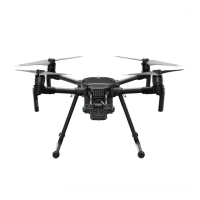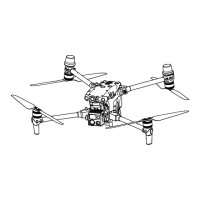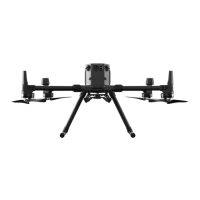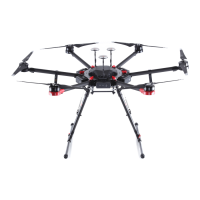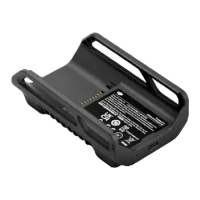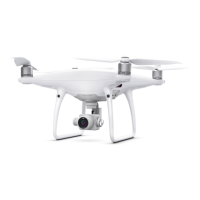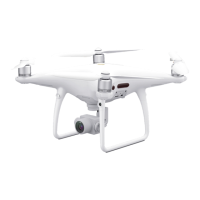the aircraft during auto RTH. When the aircraft is close to the Home Point, it is
recommended to cancel auto RTH and manually control the aircraft to land at an
appropriate location.
3. Fly the aircraft within visual line of sight (VLOS). Avoid mountains and trees blocking
GNSS signals. Any ight beyond visual line of sight (BVLOS) can be conducted
only when the aircraft performance, the knowledge and skills of the pilot, and the
operational safety management are compliant with local regulations for BVLOS. Avoid
obstacles, crowds, trees, and bodies of water. For safety reasons, DO NOT y the
aircraft near airports, highways, railway stations, railway lines, city centers, or other
sensitive areas, unless any permit or approval is obtained under local regulations.
4. Make sure the beacon and the auxiliary bottom light are enabled at night for ight
safety.
5. The performance of the aircraft and its battery is limited when ying at high altitudes.
Fly with caution. DO NOT y above the specied altitude.
6. The braking distance of the aircraft is aected by the ight altitude. The higher the
altitude, the greater the braking distance. When ying at high altitudes, you should
reserve adequate braking distance to ensure ight safety.
7. GNSS cannot be used on the aircraft in polar regions. Use the vision system instead.
8. DO NOT take o from moving objects such as cars, ships, and airplanes.
9. DO NOT take o from solid-colored surfaces or surfaces with strong reections such
as a car roof.
10. Be careful when taking o in the desert or from a beach to avoid sand entering the
aircraft.
11. DO NOT operate the aircraft near bird ocks.
DJI Matrice 4 Series User Manual
18 © 2025 DJI All Rights Reserved.

